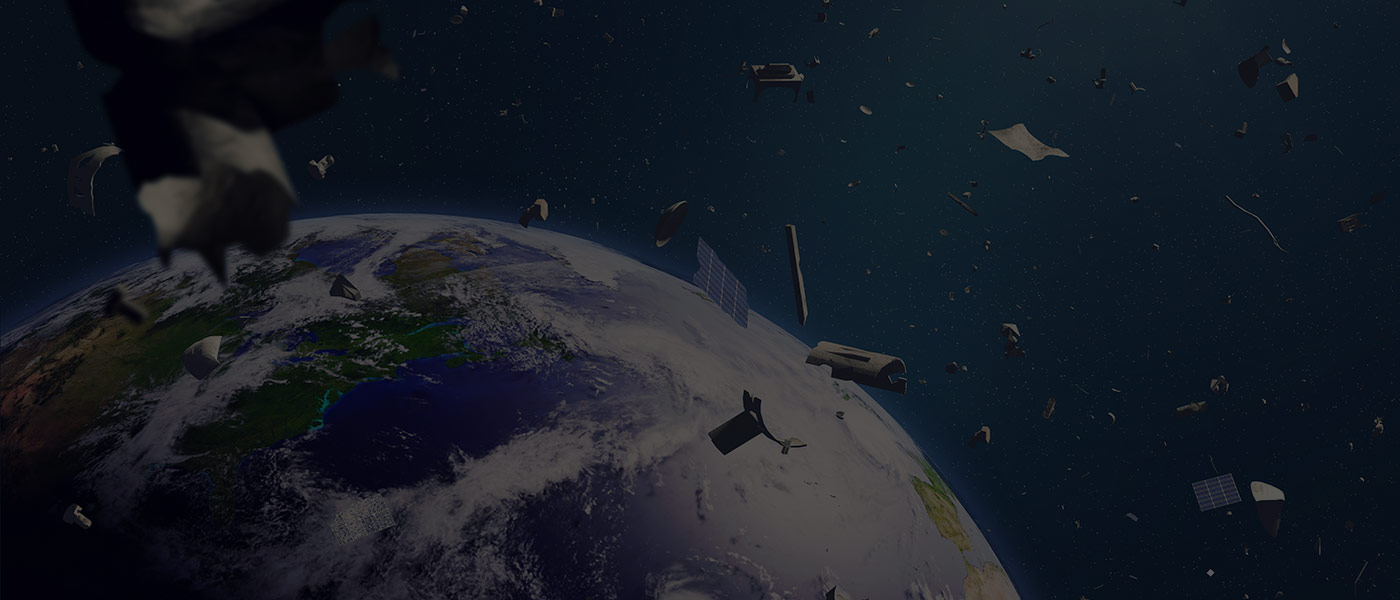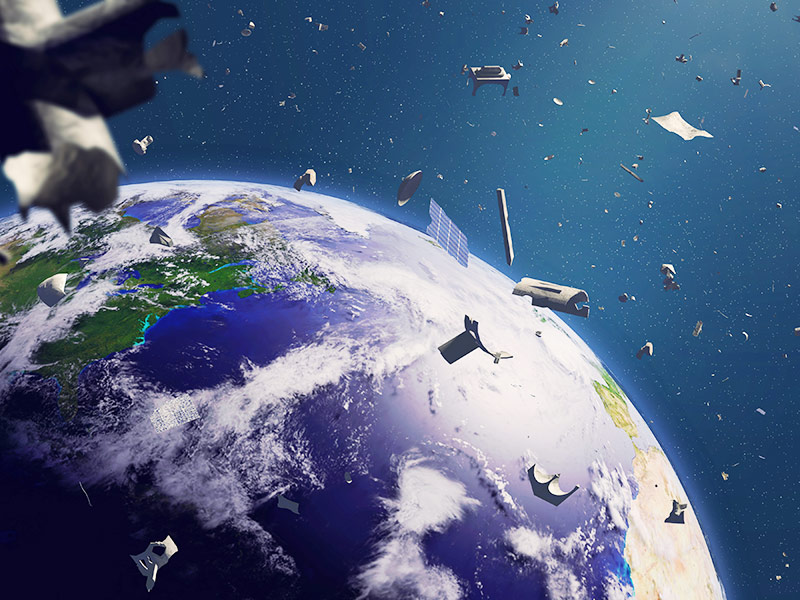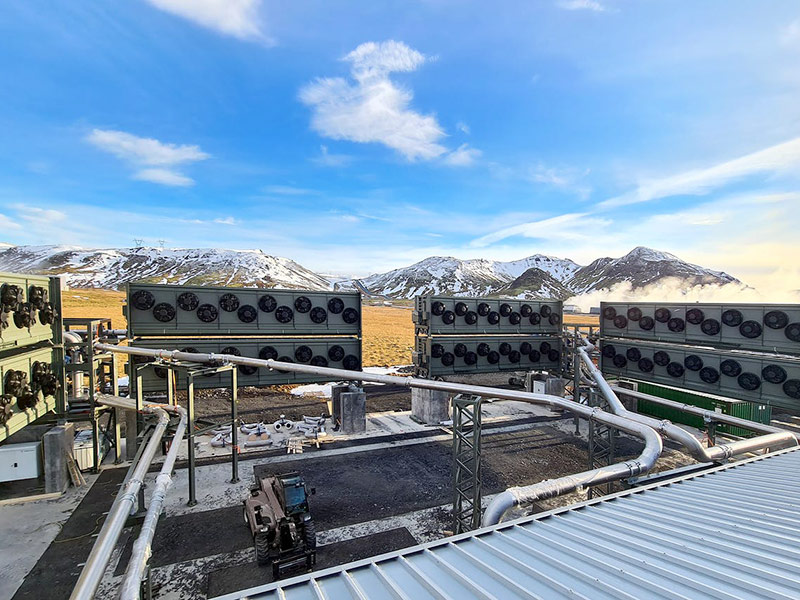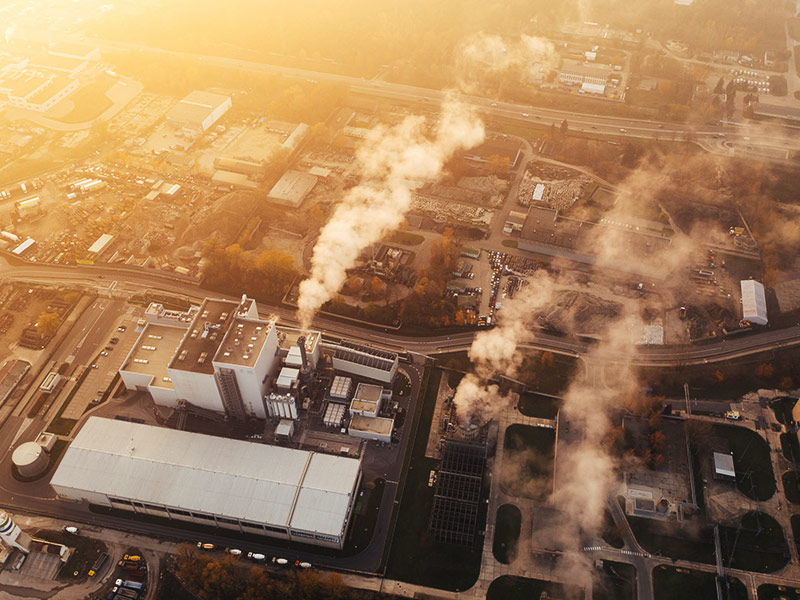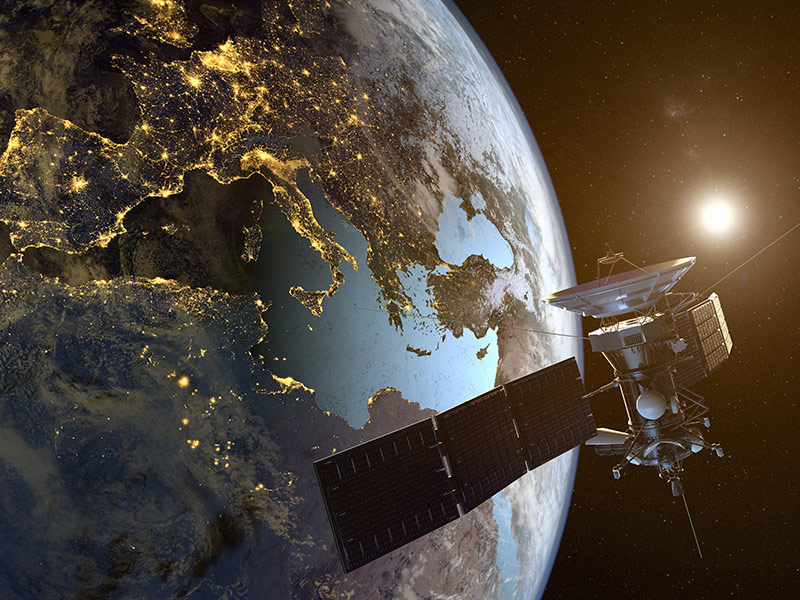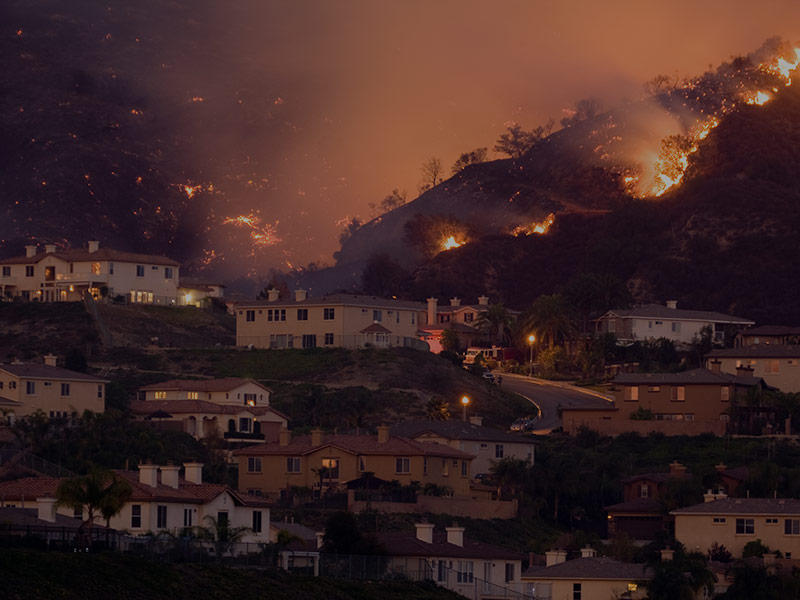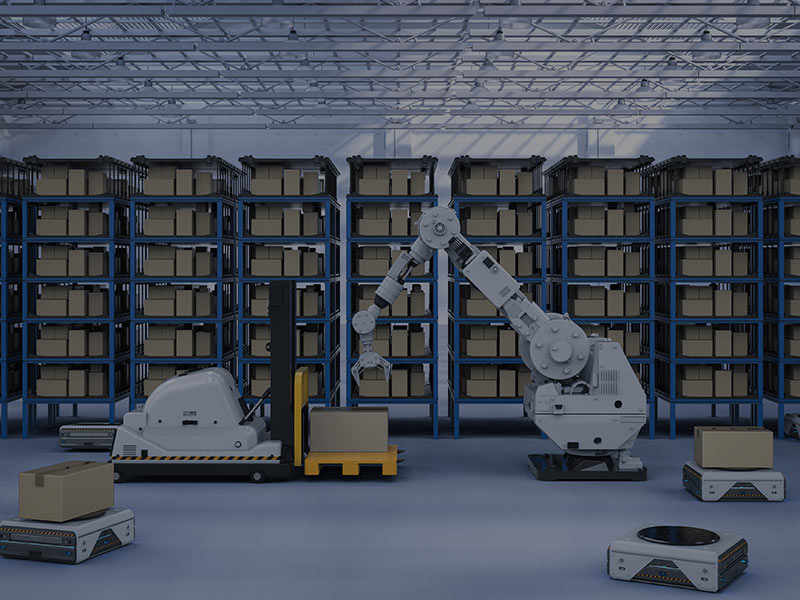Key Points
- A surge in the number of satellites in orbit has created new opportunities to monitor environmental and human rights issues, but it also poses serious sustainability challenges.
- Emissions from launches, orbital debris, and outdated laws are fueling concerns about the sustainability of current outer space activities.
- Greater collaboration is needed across the space industry to tackle these issues and ensure equitable access to limited orbital slots, resources mined in space, and jobs within the sector.
Overview

The commercial space industry has grown rapidly in recent years, with a surge in the number of launches and satellites in orbit. This growth creates new business opportunities and ways to monitor the environment and human activities. However, it also leads to sustainability challenges both on Earth and in space, such as increases in greenhouse gas emissions from launches and orbital debris.
What’s New
The space industry is enjoying a surge of activity unlike anything since the launch of Sputnik nearly 65 years ago, which signaled the start of the Space Age. Billions of dollars of private investment have fueled a new wave of startups across various aspects of the space business, including rocket development and satellite systems.
A major factor in this growth is the reduced cost of launching satellites into low Earth orbit. Companies once had to pay hundreds of thousands of dollars for this service, but SpaceX’s ability to reuse and rapidly re-fly rocket stages has reduced costs to around US$1,200 per pound of payload. Other companies are following their lead, opening space exploration to a wide range of entrepreneurs and innovators.
Cheaper access to space has also increased the number and size of “constellations” made up of hundreds or thousands of satellites. OneWeb, for example, is deploying a constellation of nearly 650 satellites to provide broadband services. Meanwhile, SpaceX has launched more than 2,000 of its Starlink satellites and is proposing a second-generation system of about 30,000 satellites. Amazon also plans to spend US$10 billion on Project Kuiper, a broadband satellite constellation that will be made up of more than 3,200 satellites.
The increase in constellations is adding to worries about the growing population of objects in low Earth orbit, both satellites, and debris. The latter includes defunct satellites and rocket stages, as well as fragments created by accidental collisions and, in some cases, deliberate tests of antisatellite weapons—including one by Russia in November 2021. This debris could set off a chain reaction of collisions. This scenario, called the Kessler Syndrome, could eventually make it difficult or impossible for satellites to operate in some orbits—particularly the low Earth orbits used by Earth science and communications satellites.
Launches pose other sustainability issues too. Many rockets use fuels like kerosene that generate greenhouse gases and soot. And while the emissions from launches are tiny compared to those from aircraft, launches can deposit pollutants in the upper atmosphere, magnifying their effect, as an Aerospace Corporation study noted. The effects of rocket emissions on the atmosphere are still largely unknown, however, as are the effects of reentries of rockets and satellites that could deposit materials like aluminum in the upper atmosphere.
Although these issues are concerning, the increase in satellites is also making it easier and cheaper to monitor environmental issues like air quality; human rights violations, such as the ethnic cleansing of Rohingya populations in Burma; and supply chains (an issue covered last year by The Fast Forward). Commercial satellite imagery has also revealed war crimes in Ukraine and provided Kyiv authorities with intelligence on Russian troop movements.
However, the gathering of satellite intelligence on armed conflicts raises concerns about the power now wielded by satellite internet companies as well as the risk of them being dragged into conflicts.
One recent report published by Secure World Foundation, a space-oriented NGO, warned of a surge of interest in weapons that can disrupt space-based services. Another report issued by the Pentagon’s intelligence agency also claimed that Russia and China are developing weapons designed to take out US satellites. In the wake of the war in Ukraine, Russia has also severed commercial ties with US and European space projects—another sign that we may be reaching the end of an era in international space cooperation.
Tensions between the US and China were further inflamed by recent near misses between Starlink satellites and the Tianhe space station module. China complained to the UN and reminded the US of its obligation to avoid such dangers (although Starlink spacecraft are privately owned, the US government is internationally responsible for their space activities under the 1967 Outer Space Treaty). However, the US implied that the risk of a collision had been exaggerated.
The incident highlights the urgent need for better communication mechanisms between spacefaring nations—particularly as outer space resource extraction starts to become a reality. The US-drafted Artemis Accords, a set of principles to govern human-led exploration of the Moon, allow for mining in support of scientific missions. The Accords, which will also set the agenda for a human-led mission to Mars, are not binding under international law but will act as a blueprint of conduct for countries that sign up to them (19 so far). However, the fact that China and Russia are planning a rival International Lunar Research Station programm could complicate efforts to regulate mining in space.
Mining on the moon, and potentially Mars and asteroids too, also has implications for planetary protection—e.g., the practice of protecting solar system bodies from contamination and protecting Earth from possible life forms that may be returned from other solar system bodies. In October 2021, a report commissioned by NASA suggested that landing robotic missions in regions of Mars that are unlikely to allow terrestrial contamination to propagate could make the planet more accessible for both government and commercial endeavors. However, while the recommendations may be taken up by the Committee on Space Research, which oversees international planetary protection standards, there is currently no regulatory agency that could enforce such guidelines for commercial missions.
Despite the many issues that need to be solved to make space-based activities more sustainable, there are now long-overdue signs of progress on Diversity, Equity, and Inclusion (DEI). NASA’s Artemis program aims to land the first woman and first person of color on the moon, for example. Executives in the commercial space sector have also pledged to significantly increase the number of women and employees from underrepresented groups. And the European Space Agency’s first call for new astronauts in more than a decade was open to candidates with physical disabilities.
Signals of Change
Executives from the space industry have signed a pledge to advance diversity across their workforces. The “Space Workforce 2030” pledge commits companies to annual reporting of data on diversity in their collective technical workforce, as well as working with universities to increase the number of diverse and underrepresented students in the technical fields needed in the space industry.
In March, the United Nations banned the use of mercury as a satellite propellant by 2025, citing the human health risks that mercury poses as it reenters the atmosphere. A space industry whistleblower informed Public Employees for Environmental Responsibility, a US environmental organization, that a mercury-based thruster was in development in 2018. The ban came about before any thrusters made it into orbit.
Astroscale has secured European Space Agency funding for a 2024 demo mission to remove what will likely be a OneWeb satellite from orbit. The tech firm is one of the early movers in the space debris disposal industry and plans to launch a commercial de-orbit service for satellite operators in due course.
Fast Forward to 2025
The one I’m referring to created thousands of pieces of debris—none of which, I’m relieved to say, hit any of our satellites, which we managed to maneuver out the way in time. But one of our competitors wasn’t so lucky...
The Fast
Forward
BSR Sustainable Futures Lab
Implications for Sustainable Business
In recent years, the term “space sustainability” has gained traction in the space industry. While there is no universally accepted definition, it’s generally used as an umbrella term for measures designed to ensure that space activities don’t have adverse effects on either space or the Earth. However, there is very little international regulation that specifically addresses space sustainability. In 2019, the United Nations Committee on the Peaceful Uses of Outer Space published a set of 21 guidelines for the long-term sustainability of space activities, including ways to coordinate satellite activities and avoid collisions. But those guidelines are not binding; it is up to individual countries to decide whether and how to implement them. Space debris—or “space junk”—is one of the most pressing concerns. The issue has been around since the dawn of spaceflight, but recent anti-satellite missile tests and a huge increase in the number of satellites in orbit have exacerbated the problem. There are now over 20,000 known and tracked pieces of space debris orbiting Earth, which pose a huge risk to future space missions. An estimated 100 tons of space junk also makes it to Earth's surface every year.
There are many dimensions of sustainability that we’re just beginning to understand, but the really exciting part of this is that we’re witnessing the emergence of a brand new industry and the ability to integrate sustainability at its core from the beginning. It’s an incredible opportunity.
Despite the scale of the space junk problem, both governments and the private sector have been slow to act. Today, most efforts focus on avoiding adding to the problem rather than cleaning up the debris that’s already in orbit. However, the WEF’s new Space Sustainability Rating should increase transparency around space operators’ contributions to protecting the space environment and encourage more responsible behavior. There are other issues beyond debris that urgently need to be addressed. Satellite constellations like Starlink can interfere with astronomy, as the satellites can be bright compared to distant stars and galaxies and dazzle the sensitive instruments that astronomers use on telescopes. Organizations like the International Astronomical Union have taken up this issue and are working with companies to reduce the brightness of their satellites. But the problem highlights how commercial activity coupled with a lack of industry-led binding collaborations could lead to a “tragedy of the commons” in space.
Orbital slots are another concern. Satellites in geostationary orbit are used for telecommunications, broadcasting, and weather monitoring, but slots are limited. As of February 2022, 541 of the 1,800 available were occupied by active satellites. These slots are allocated by the International Telecommunication Union on a first-come, first-served basis, which effectively means they go to the countries and companies with the most technological and financial muscle. This issue will need to be addressed to create more equitable access.
Satellites can play an essential role in advancing environmental sustainability. While those operated by governments have provided environmental information for decades, companies are now developing their own spacecraft to provide more specialized capabilities. One example is GHGSat, a Canadian company that is developing satellites to track methane and other greenhouse gas emissions. It can track leaks of such gases to specific oil and gas facilities, helping companies and government agencies monitor emissions with greater precision.
The Environmental Defense Fund is also pursuing its satellite to track methane emissions, MethaneSAT, whose data will be freely available. Carbon Mapper, another nonprofit, is pursuing its own constellation in partnership with Planet, a company that operates more than 150 imaging satellites. Meanwhile, a British company, Satellite Vu, is working on satellites to detect thermal emissions from buildings to enable more efficient energy use.
Can you imagine life without GPS? Well, the sensors that we're launching into space today for customers like NASA, and the satellites we are planning on launching, could someday have as transformative of an impact on every single person on Earth as GPS does today.
Looking beyond emissions, HawkEye 360 operates satellites that can track ships based on their radio and other transmissions, allowing governments and organizations to identify illegal fishing. Satellite imagery from companies such as Maxar has also been used to monitor human trafficking and slave labor around the world.
The growth of satellite-based internet services could offer a solution to internet shutdowns and censorship too. Starlink has already helped to keep parts of Ukraine connected after attacks on physical communications infrastructure. However, the limited number of players in the satellite internet space to date, and the amount of resources needed to compete in this market, has sparked monopolization concerns.
Space is a source of vast mineral riches that might also be monopolized by a small number of countries and firms. The US, Japan, the UAE, and Luxembourg have already passed dedicated laws granting companies rights to any minerals and other natural resources that they extract in outer space. But while space mining could boost the economies of countries that can carry it out, it could disrupt those of countries that are heavily geared toward exporting minerals and metals—an area that will require more attention as space mining shifts from "sci-fi" to emerging industry.
No matter whether they’re providing satellite broadband or imaging, or supporting crews aboard the International Space Station, firms in the space sector will need to scale up their DEI efforts. The next generation of explorers, engineers, technicians, and company leaders will come from a rich mix of backgrounds. Ensuring that all groups are represented, treated fairly, and have their rights protected is an important first step today in reaching a giant leap in fairness tomorrow.
![]()
Previous issue:
Exit Strategies for Dirty Assets
![]()
Next issue:
Infrastructure Breaks Under Extreme Heat
